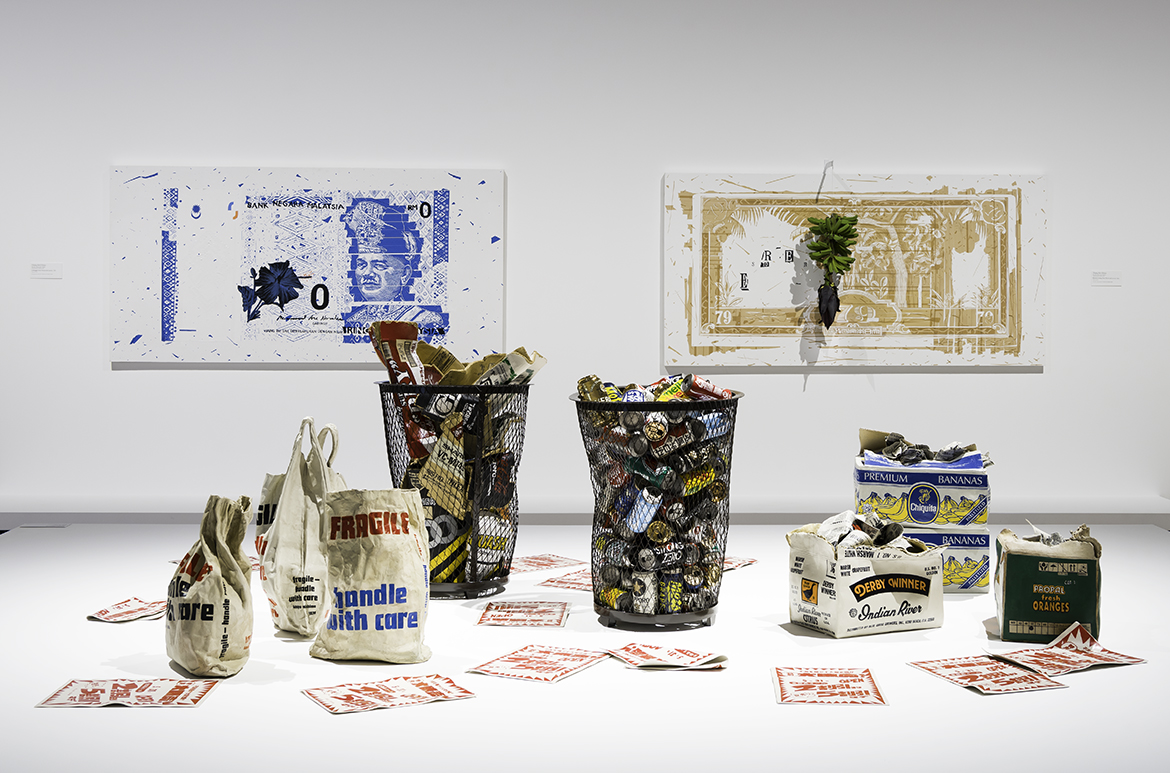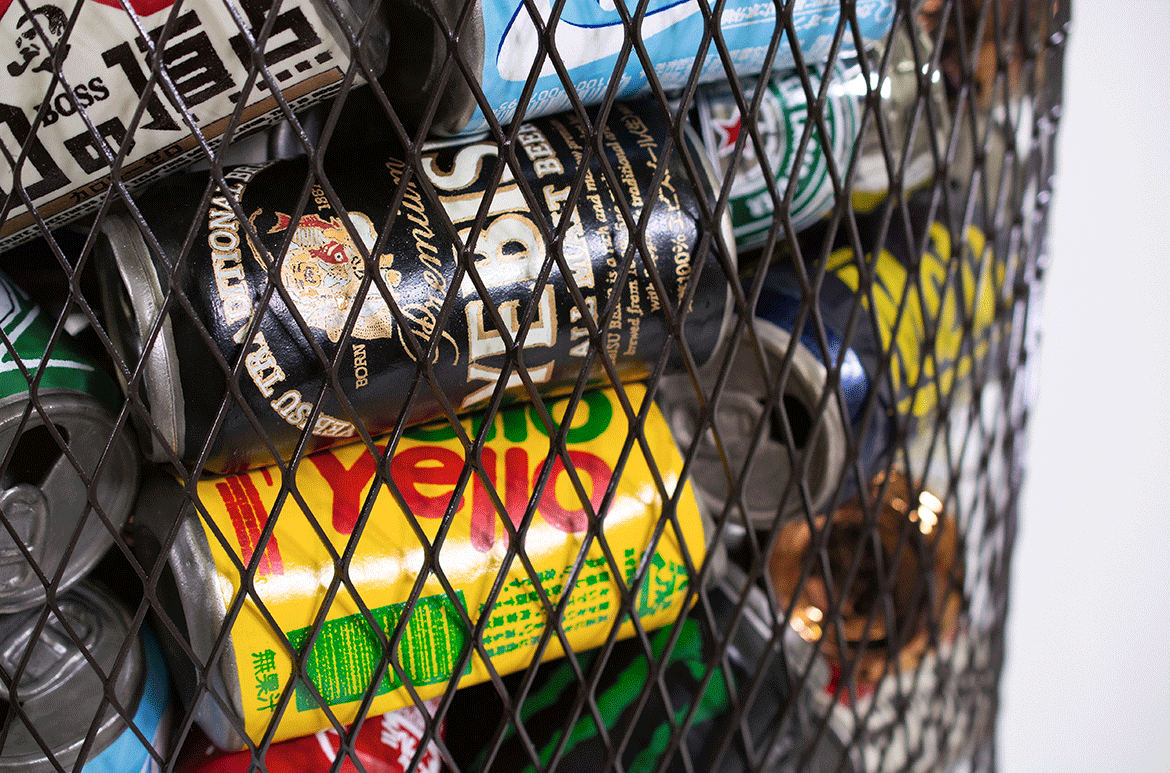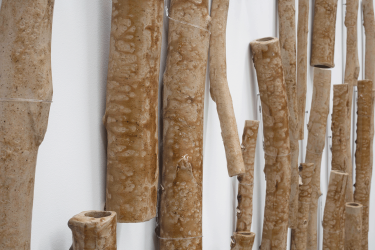Over her long career, Kimiyo Mishima has become one of Japan’s most widely exhibited female ceramic artists, noted for her wry humour and material sophistication. Her background, however, lies not in Japan’s justly honoured disciplines of craft and design but in the avant-garde, accompanied by a persistent fear of being buried in the ever-accumulating castoffs of contemporary society.
Mishima first came to prominence in Japan as a painter in the late 1950s and 1960s, collaging news and magazine clippings to oils on canvas as a play on the emerging consumer culture. In 1971, she turned to ceramics, crafting objects that re-create ordinary products such as newspapers, manga, strips of film and postboxes in ways that closely mimic the originals. Using screenprinting and hand-colouring, her ceramics quickly became refined to the point that she considered them replicas of the everyday.
Kimiyo Mishima ‘Work 19 – G’

Kimiyo Mishima ‘Work 21 – C4’

Work 19 – G 2019 (G standing for ‘garbage’) (illustrated) features a mesh bin cast in iron and stuffed with ceramic objects that pass as cardboard boxes, intricately labelled as containers for a range of commodities, from soft drink and beer to fruit. It is complemented by Work 21 – C4 2021 (C standing for ‘cans’) (illustrated) , which is full to the brim with enormously convincing ceramic renderings of 90 aluminium beverage cans, their colourful designs rendered in exquisite detail.
For Mishima, waste is a sign of overproduction, of a society that generates more than it can sustainably process and certainly more than it needs. Ceramics, for Mishima, is a medium whose products are inherently breakable and, therefore, intuitively valuable. Accordingly, she describes her work with the paradoxical phrase ‘breakable printed matter’ — ‘throwaway’ objects whose beauty and material vulnerability implicitly recommend handling with care.
Reuben Keehan is Curator, Contemporary Asian Art, QAGOMA
This is an extract from the QAGOMA publication The 10th Asia Pacific Triennial of Contemporary Art available in-store and online from the QAGOMA Store.

‘The 10th Asia Pacific Triennial of Contemporary Art’ (APT10) / Queensland Art Gallery and Gallery of Modern Art (QAGOMA), Brisbane / 4 December 2021 to 25 April 2022.
Supported by the Australia-Japan Foundation of the Department of Foreign Affairs and Trade, the Ishibashi Foundation and the Japan Foundation.
Featured image detail: Kimiyo Mishima Work 21 – C4 2021
#QAGOMA #APT10QAGOMA


